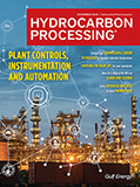Corrosion
Emerson to acquire UK-based Permasense Ltd.
Emerson has agreed to acquire UK-based Permasense Ltd., a provider of non-intrusive corrosion monitoring technologies for heavy industries, including refining, chemical, and pipelines.
US Water’s PhosZero chemistry named finalist in R&D 100 Award
US Water has been selected as a finalist by the R&D 100 Award Program for PhosZero, its unique antiscalant and corrosion inhibitor, cooling water chemistry.
Wika reduces risk of undetected diaphragm ruptures
Wika’s PG43SA-D diaphragm pressure gauge is unique in featuring an integrated diaphragm monitoring and eliminates the risk of an undetected diaphragm rupture.
Design operations-and-maintenance-friendly pressure vessels—Part 2
In Part 1 of this article, the assistance provided by standardizations to gain improved vessel performance—vessel outer diameter (OD), component metallurgies, manways and saddles—was discussed.
Metrohm develops ASTM acid number method for petroleum products
A method of determining the acid number in crude oil and petroleum products using thermometric titration has been developed by Metrohm and released by the ASTM.
Innovations
Unintended fugitive emissions from pressurized plant components have long been a key concern for operators as well as regulators.
Improved corrosion prevention with acid-aided regeneration technology
Enhancing regeneration in amine treating systems has proven beneficial in many applications by improving operations and relieving design limitations via reduced steamrates and/or improved treating performance.
Editorial Comment: Corrosion prevention is a necessary cost
Corrosion is a major maintenance and reliability concern because it has the potential to impact not only plant operations and costs, but also the environment and worker health and safety.
Control fouling on preheat trains with a two-stage approach
Fouling in heat exchanger preheat trains is a well-known problem in the refining industry.
Emerson unveils new system to monitor corrosion
The Roxar Corrosion Monitoring system, consisting of wireless-based probes, will provide refineries with flexible, responsive, integrated and accurate corrosion monitoring, according to project officials.

- NAPCOR releases 2024 PET recycling report highlighting system efficiency gains and continued strength of PET circularity 12/12
- OQ courts other partners for petrochemical complex in Oman as SABIC drops out 12/12
- Brazil's BNDES approves $71 MM for carbon storage project 12/12
- Cuba on edge as U.S. seizure of oil tanker puts supply at risk 12/12
- China oil demand to plateau between 2025 and 2030 12/12
- Germany's PCK refinery says no impact from pipeline leak 12/12




